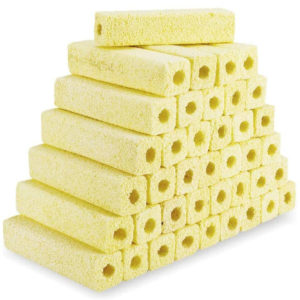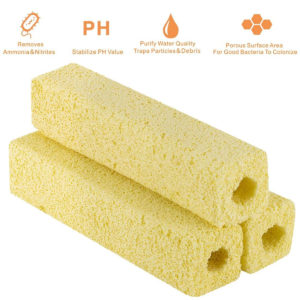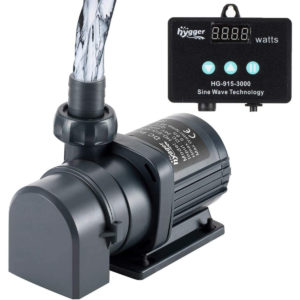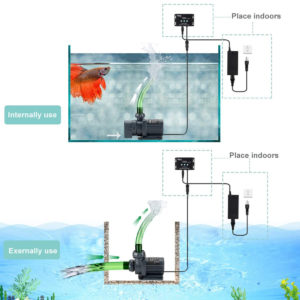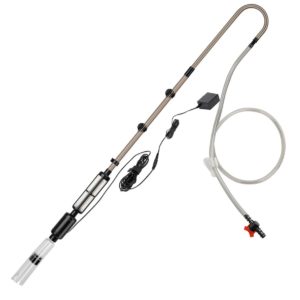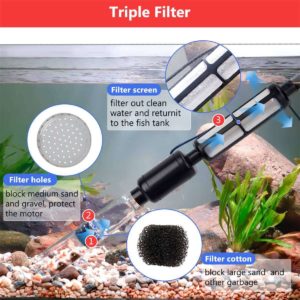Clean and Disinfect a Contaminated Aquarium
Aquarium contaminants refer to the substances harmful to fish and aquarium ecosystems, including substances damaging to fish, nitrifying bacteria, and beneficial bacteria, visible and invisible detrimental substances, plus inorganic salt in high concentration. In planted tanks, substances noxious to plants can be aquarium contaminants. If you’re interested in how to deal with a contaminated aquarium, read on to find out more about aquarium contaminants and contaminated water.
What is the composition of the organic waste in aquariums
Organic waste in aquariums consists of visible and invisible contaminants. Specifically, visible waste mainly includes fish feces, uneaten fish food, and decaying matter. On the other side, invisible waste is composed of ammonia and nitrite dissolved in the water, which is the result of the decomposition of fish feces and uneaten fish food.
Besides that, mucus secreted from fish surfaces and tissue shed from sick fish is organic waste in aquariums. Generally, they will not pose threats to fish growth and health. But in tanks with sick fish, you should remove them.
So where is the organic waste in aquariums? Most visible contaminants sink to the bottom of the tank, while partially visible waste is intercepted by physical filtration, leaving fine particles suspended in the water. Also, invisible waste is usually dissolved in the water, moving around the tank as water circulates.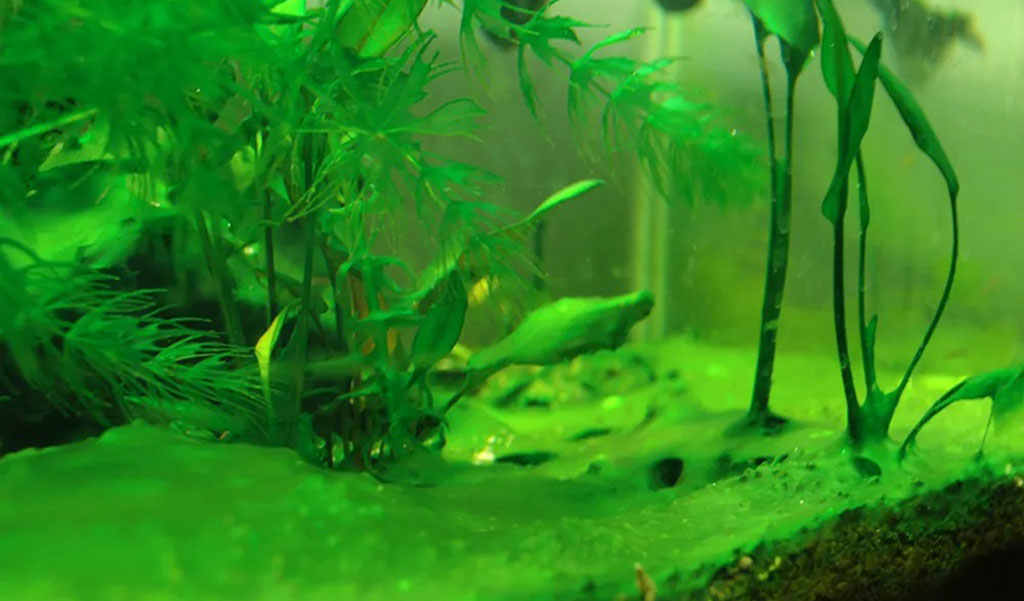
What is the contaminated water in a fish tank?
Contaminated water may be a result of suspended particle accumulation, caused by decaying fish feces, uneaten food, aquatic plants, and leaves, as well as algae growth, etc. As the particles accumulate on filter media or decompose, it would trigger a deteriorated nitrifying system and higher levels of ammonia or nitrite. Finally, the poor water quality would pose threats to fish health.
How to clean a contaminated aquarium
After learning some basic information about organic waste and contaminated water in aquariums. Next in this segment, we will discuss how to clean a contaminated aquarium.
How to remove contaminants sunk in the bottom of the tank
Can water pumps and filters remove all waste? Is it not necessary to clean the bottom of the tank? The brief answer is No. Though the water pump and filters are beneficial for removing waste in the tank, there is organic waste remaining at the bottom of your tank. In this case, you can solve the problem by changing water. An electric vacuum gravel cleaner will help you a lot. It makes sense to change the water automatically, remove dirt, and wash sand. Here is the cleaning kit test video that helps to clean the tank effectively.
How to remove contaminants suspended in the water
Suspended contaminants will pose threats to the aquarium ecosystem and filtration system. Seeing that most suspended contaminants are small particles, some are even invisible. Accordingly, the contaminants are hard to remove by physical filtration. Moreover, suspended contaminants can easily attach to filter media, leading to worse physical filtration, plus higher demanding needs of biological and chemical filtration. As a result, it may cause an overburdened nitrification system. More seriously, a massive amount of nitrifying bacteria may suffer death because of oxygen deficiency.
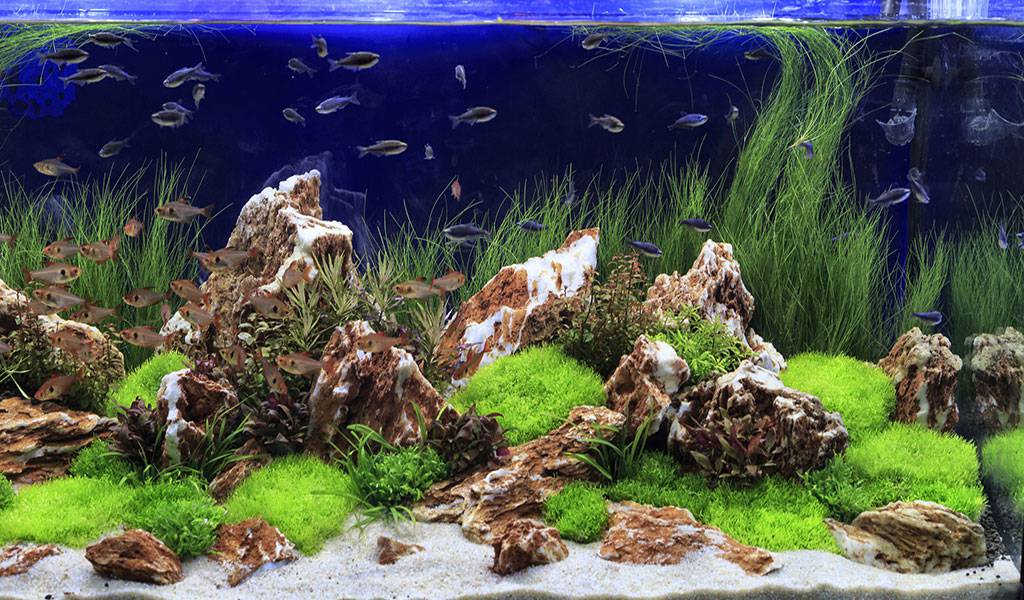
To remove suspended contaminants, you can do complete water changes, and clean or replace the filter media. Accordingly, the content of suspended contaminants in the water will be reduced. Furthermore, it is also feasible to accelerate the dissolving of suspended contaminants by improving the water temperature or oxygen level.
How to remove contaminants intercepted by physical filtration
Facing contaminants intercepted by physical filtration, you can clean or replace the filter media. Commonly, just put the filter media in clean water and pinch them a few times. Just keep in mind – never make the filter media too clean. Otherwise, the bacteria attached to the media will need to reproduce again. Aside from that, you’d better do partial cleaning each time.
How to remove contaminants dissolved in the water
Ammonia and nitrite are primary contaminants dissolved in the water, which are poisonous to fish. The toxic contaminants can not be removed by filtering, but you can remove them with the help of beneficial bacteria and nitrifying bacteria.
Beneficial bacteria, like heterotrophic bacteria, can decompose fish feces and uneaten fish food into ammonia. Nitrifying bacteria include nitrite bacteria and nitrate bacteria. Also, nitrifying bacteria play an essential role in converting ammonia into nitrous acid, then into nitric acid, and finally form nitrate. Nitrate is an inorganic substance, that is harmless to fish.
However, only by attaching to an object’s surface, nitrifying bacteria can survive. As a result, it is critically vital to add massive filter media or aquarium decors, which are helpful for nitrifying bacteria growth. Also, only if there is plenty of oxygen, nitrifying bacteria can convert ammonia into a harmless substance. Thus, you should make sure adequate oxygen in the tank. Additionally, nitrifying bacteria grow slowly.
How to remove contaminants from sick fish or inorganic salt in high concentration
When it comes to sick fish in your aquarium, you should separate them to another quarantine tank first. And then treat them with proper medications according to specific diseases. Moreover, inorganic salt in high concentration is damaging to fish. You can tackle the issue by planting some aquatic plants or algae to consume inorganic salt. Also, doing water changes is another excellent remedy.
In a nutshell, the solutions can be varied from different contaminant types. Just as the following table shows:
| Contaminant types | Solutions |
| contaminants sunk in the bottom of the tank | Clean the substrate and change the water |
| contaminants suspended in the water | Do water changes |
| contaminants dissolved in the water | Grow more nitrifying bacteria |
| contaminants intercepted by physical filtration | Clean the filter media |
| contaminants of inorganic salt in high concentration | Planting aquatic plants & Do water changes |
In summary
To conclude, contaminants in aquariums can be classified into five types – contaminants sunk in the bottom of the tank, contaminants suspended in the water, contaminants dissolved in the water, contaminants intercepted by physical filtration, and contaminants of inorganic salt in high concentration. Just find the right types, and then you can take proper treatments to clean and disinfect the contaminated aquariums. In addition, to keep a comfortable environment, you should clean the aquarium regularly.

